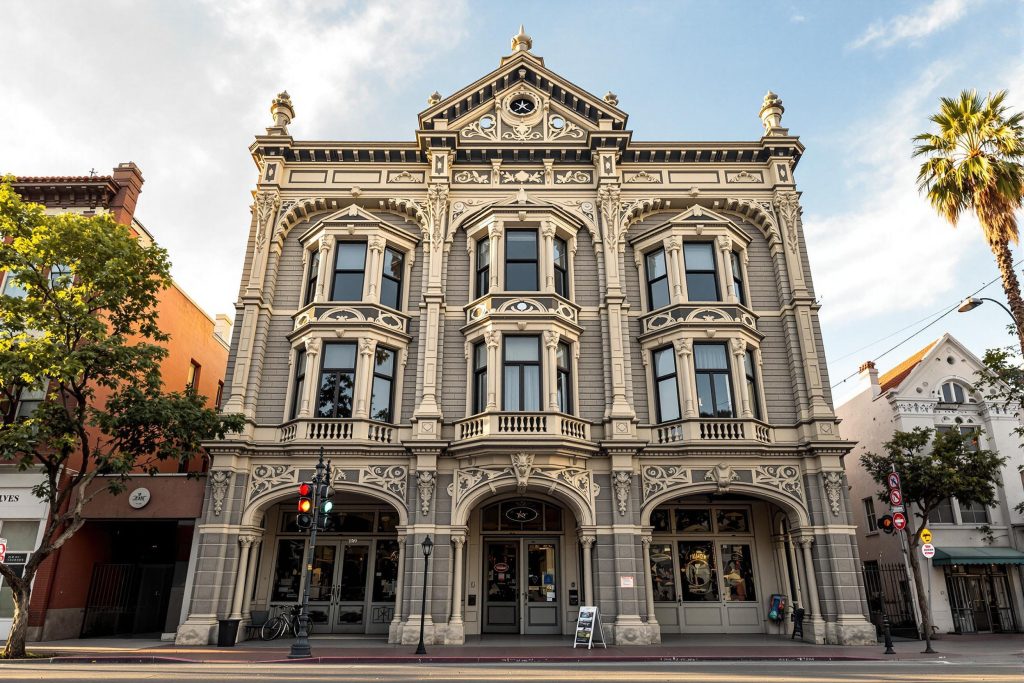
Anaheim’s story begins in the mid-19th century when a group of German immigrants from San Francisco sought fertile land for winemaking. In 1857, fifty families, part of the Los Angeles Vineyard Society, purchased 1,165 acres of land near the Santa Ana River. They named the settlement “Anaheim,” combining “Ana” from the river and “heim,” the German word for home. The settlers carefully planned the town, designing wide streets and agricultural plots. By the 1860s, Anaheim had become Southern California’s largest wine-producing region, with over 50 vineyards and a reputation for high-quality grapes.
However, this early prosperity was short-lived. In the late 1880s, an outbreak of Pierce’s Disease devastated the vineyards, forcing the community to shift from wine production to other crops, such as walnuts, oranges, and lemons. This agricultural shift set the stage for Anaheim’s future as a citrus-growing hub.
By the early 20th century, Anaheim had transformed into a major center for citrus farming. The area’s fertile soil and warm climate made it ideal for growing oranges, leading to the rise of vast groves that covered much of Orange County. The Sunkist cooperative, established in the early 1900s, helped distribute Anaheim’s citrus products nationwide, fueling economic growth.
The completion of the Pacific Electric Railway in 1904 connected Anaheim to Los Angeles, bringing an influx of new residents and businesses. Downtown Anaheim flourished with new stores, schools, and entertainment venues. The Fox Theatre, built in the 1920s, became a cultural hotspot, showcasing silent films and later talking pictures.
World War II spurred further industrial growth, as Anaheim played a role in the war effort. Defense-related manufacturing brought jobs, and by the late 1940s, the city had begun shifting from an agricultural town to a rapidly growing suburban community.
The most defining moment in Anaheim’s modern history came in 1955, when Walt Disney opened Disneyland, forever changing the city’s identity. What was once a quiet agricultural town quickly transformed into a booming tourist destination. The theme park’s success led to rapid commercial development, including the construction of hotels, restaurants, and entertainment venues catering to millions of visitors each year.
During this period, Anaheim also experienced significant suburban expansion. With the post-war housing boom, neighborhoods spread across former farmland, accommodating the growing population. The Anaheim Convention Center, opened in 1967, reinforced the city’s role as a tourism and business hub. Meanwhile, the arrival of the Los Angeles Angels in 1966, playing at Anaheim Stadium, established the city as a center for professional sports.
By the late 1970s, Anaheim was no longer just a small farming town—it had evolved into a major metropolitan area, attracting families, businesses, and sports fans alike.
The late 20th and early 21st centuries saw Anaheim continue to grow into a diverse and dynamic city. The 1980s and 1990s brought revitalization efforts, including improvements to the Resort District, making it a premier destination. Disney’s expansion with Disney California Adventure Park in 2001 reinforced Anaheim’s status as a world-class tourism hotspot.
Beyond its entertainment sector, Anaheim became home to a thriving cultural scene. The Honda Center, opened in 1993, brought the Anaheim Ducks and a variety of concerts and events. The Anaheim Packing District, a restored citrus warehouse turned food hall, revived the city’s historic agricultural roots in a modern way.
Today, Anaheim is a city of contrasts—where historic landmarks like the Mother Colony House stand alongside high-rise hotels, and where the community embraces both its immigrant heritage and its place as an entertainment capital. The city continues to evolve, blending history, innovation, and culture into its identity.
From its early German settlers and agricultural beginnings to its rise as a global tourism destination, Anaheim’s history is a testament to resilience and reinvention. What started as a winemaking village grew into a citrus powerhouse and ultimately became one of the most recognizable cities in the world. Today, Anaheim remains a place of opportunity, creativity, and excitement, drawing millions of visitors while maintaining its rich heritage.

HERE Anaheim strives to provide the finest deals, products, and experiences in your local community. It’s all RIGHT HERE, and it’s all LOCAL.
If you notice something that you believe should be here, please let us know. And you’ll notice it soon HERE!
© Copyright 2025, HERECity.com